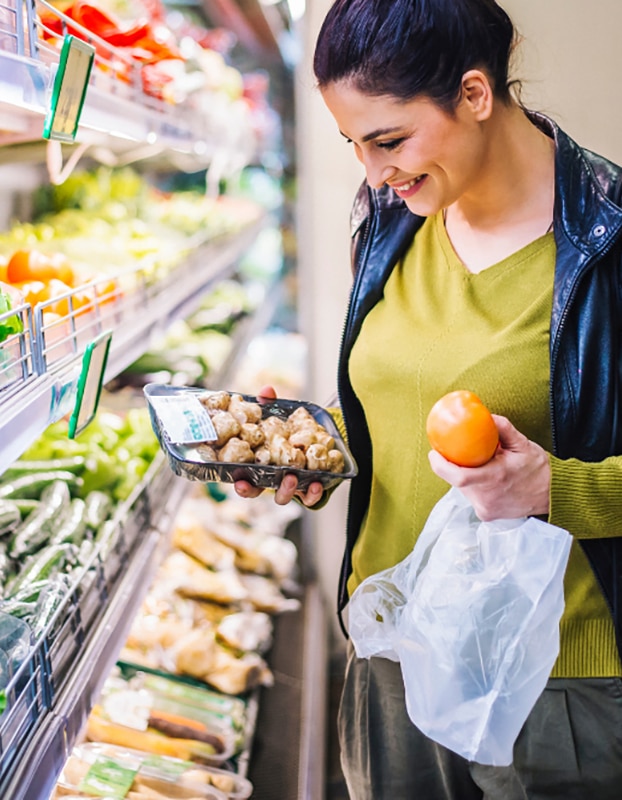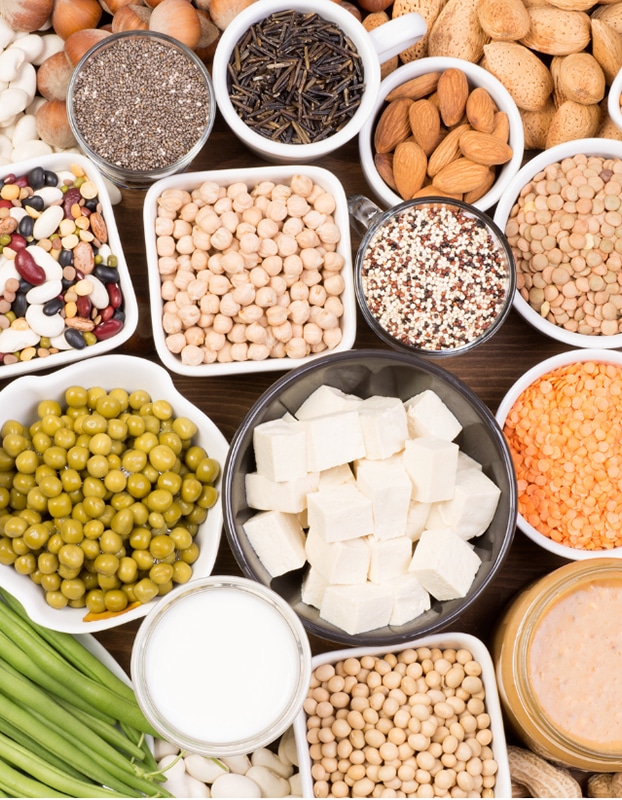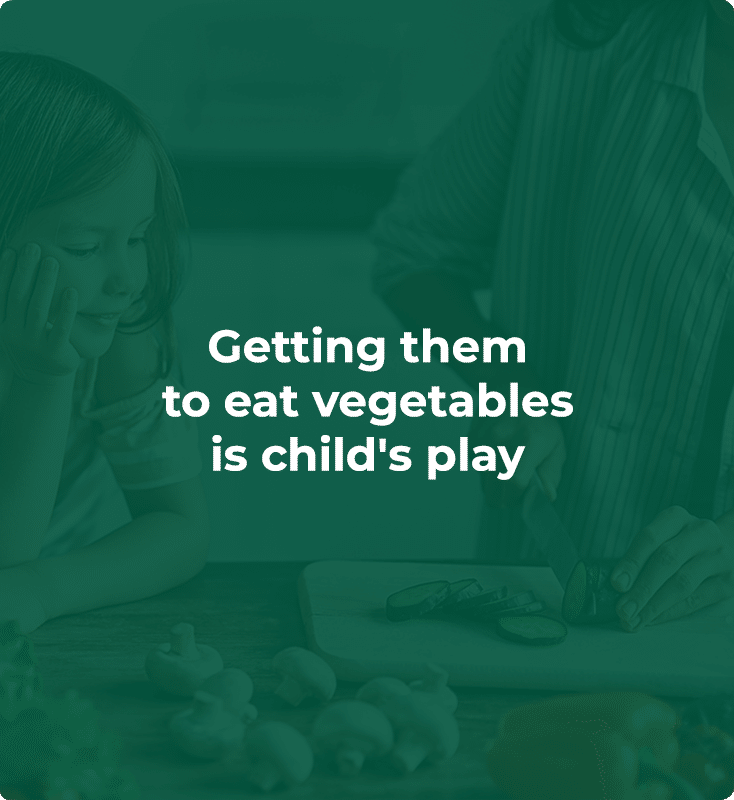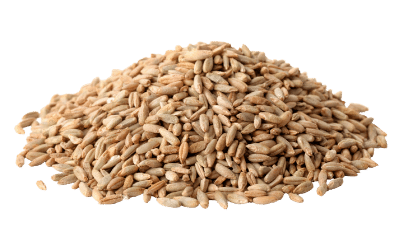Recipes we love
See all recipesFarmhouse bread toasts, tomatoes, mozzarella
A starter to share with friends or family, ideal for summer evenings. Full of vitamin A thanks to th...
Zucchini and peppers toasts
An easy recipe, ideal for evenings with friends. Vitamins will be part of the party and contribute t...
Bean-tuna sandwich
A recipe to share with friends or family that help digestion and provide vitamin B9 which contribute...

Health
benefits
Rye is a starchy food, part of an important, healthy and wide-ranging category. It is a cereal, rich in carbohydrates, which should count for 40-55% of our recommended daily energy intake, according to the recommendations of Anses (PNNS).
Rye is not only important for humans. Generally speaking, cereals play an important role in a sustainable diet, providing carbohydrates as well as plant proteins, vitamins and minerals. We need to incorporate more plant-based foods in our diet, both for the health of humans and of the planet, and rye can be part of this equation.
- Rich in magnesium. Magnesium helps, among others, to reduce fatigue, keep our muscles working properly and maintain normal bone structure.
- Rich in phosphorus. Phosphorus contributes to strong bones and healthy teeth, as well as energy metabolism.
- Contains vitamin B3 or niacin. Niacin helps energy metabolism, the nervous system and psychological function. It also helps us to maintain normal skin and to counter fatigue.
- Contains vitamin B9 or folic acid. Folic acid is essential during pregnancy and for normal psychological function and the immune system. It is also good against fatigue.
Nutritional
values
The right time
to eat it
Rye is harvested from April to May.
How it
is grown
Rye grows very easily, even in cold and difficult soil. There are several varieties, some growing to a height of 1.5m. The ear of rye resembles wheat but is slightly shorter, while its kernel is longer than a wheat kernel. Rye is a biennial herbaceous plant in the grass family (Paceae). It is green, turning golden when ripe.
Sowing takes place from September to October, with the seeds planted about 3cm apart. Rye can be grown in full sun and in all types of soil. It is harvested before wheat, from April to May. Rye is also lifted in spring for use as green manure. The grains reach maturity for flour in late June or early July.
Choosing
and storing
Like all cereals, rye needs to be stored in a cool, dark place. Storage methods vary according to the type of warehouse.
If storage is temporary and for a limited time, the grain can be kept in sacks in a cool place. Once used in food products, shelf life varies depending on the product.
Tips
and tricks
Tips for avoiding waste
Did you know? Rye straw can be used as an insulating material, for example, in thatched roofs or for use in artisanal products.
Rye is an ancient crop but has given way to more traditional cereals whose flour is easier to use in making bread. But rye is still growing, especially organically, to make flour for rye bread. The grain is also used to make beer, whisky and gin.
What is the environmental
impact of rye?
We can find out more from its PEF (Product Environmental Footprint) score! This is a score established by Agribalyse*. It takes into account every stage in a vegetable’s life cycle: how it’s cultivated, what is the impact of processing and transport, etc. The lower the score, the less impact it has on the environment.
- Whole rye, raw: 0.14
- Raw beef steak: 2.77
*Figures drawn from the Agribalyse database, which calculates the environmental score of different types of food. This unique score is a weighted average of 16 indicators, calculated according to the European PEF methodology. It does not correspond to an environmental label or ‘eco-score’.
CO2 equivalent: for 100g of whole rye (raw), 0.072kg of CO2 eq, or as much as from 2.1g of raw beef steak.
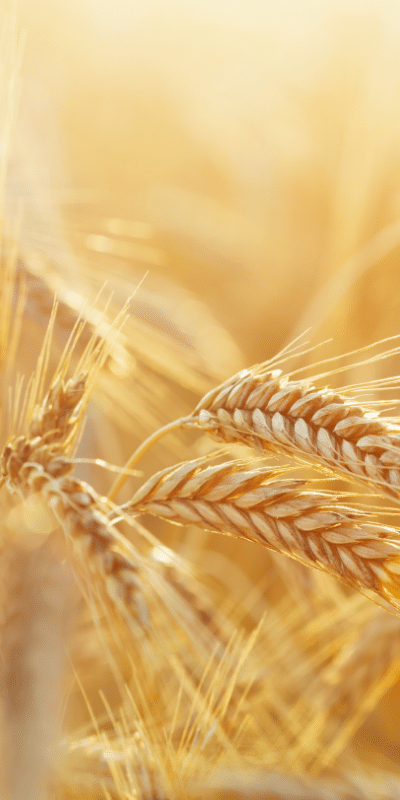
Can everyone eat it?
Rye can gradually be incorporated into a child’s diet, with a slice of rye bread for example.
It can be a good way of varying tastes, as children often like its texture.
Where does it come from?
The origins and varieties of rye
Rye originated in the Near East, with the first traces of the cereal found in modern-day Turkey. Its cultivation then gradually spread to Europe, including Germany and Poland, where it was widely grown. There are three main varieties, each including different species: population rye, hybrid rye and synthetic rye:
- Conduct
- Evolo
- Festus
- Rasant
- Picasso
- Caroass



 Chard
Chard  Artichoke
Artichoke  Vegetable garden: growing cauliflower
Vegetable garden: growing cauliflower 


